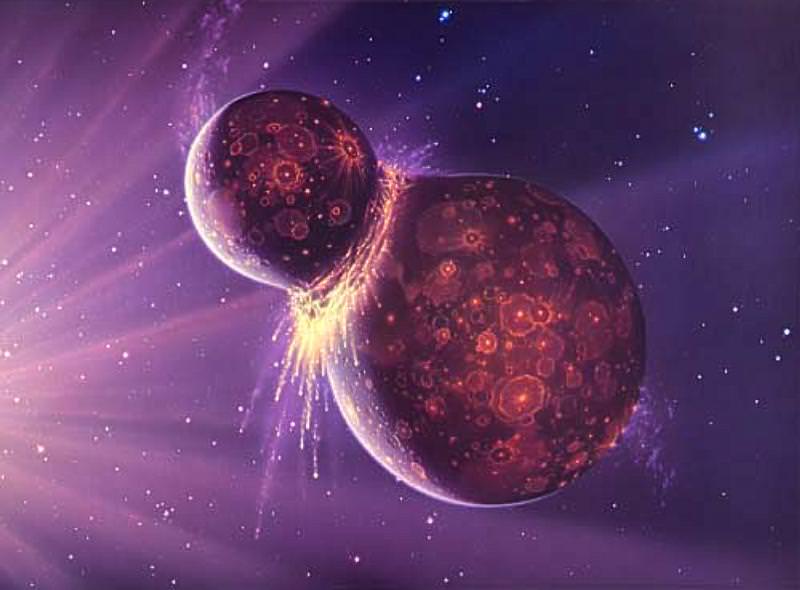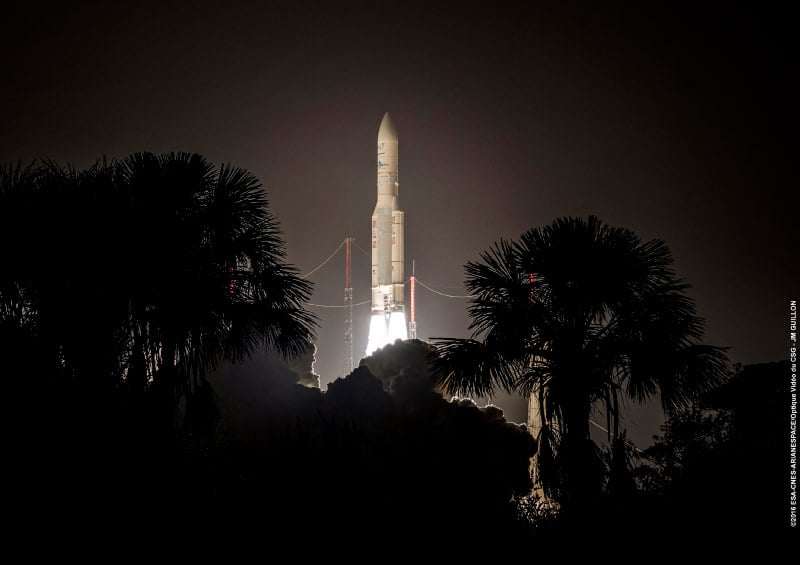
On Feb. 6th a bus driver in India was reportedly struck and killed by a falling meteorite. Did this really happen? Almost certainly not. We look at the details.
Continue reading

Continue reading

In the third and final article in our gravitational wave guide, we explain what kinds of events can generate these powerful ripples in spacetime.
Continue reading

The discovery of hundreds of galaxies, hidden from view behind the Milky Way, help shed light on the nature of The Great Attractor.
Continue reading

Time to brush up on your gravitational wave basics, if you haven't done so! In Gravitational waves and how they distort space, I had a look at what gravitational waves do. Now, on to the next step: How can we measure what they do? How do gravitational wave detectors such as LIGO work?
Continue reading

Astrophysicists using the Kepler Spacecraft have discovered the largest rocky planet yet: BD+20594b is 16 times as massive as Earth.
Continue reading

Also known as NGC 7089, Messier 2 is a large globular star cluster located in the constellation Aquarius, 33,000 light years from Earth.
Continue reading

KENNEDY SPACE CENTER, FL - NASA officials proudly unveiled the pressure vessel for the agency's new Orion capsule destined to launch on the EM-1 mission to the Moon in 2018, after the vehicle arrived at the Kennedy Space Center (KSC) in Florida last week aboard NASA's unique Super Guppy aircraft.
Continue reading

Now is the time to catch sight of the asteroid 4 Vesta, as it pairs with Uranus and several stars in the early dusk sky.
Continue reading

Continue reading

In the latest discovery to come from the New Horizons mission, it now seems that Pluto has hills of water ice that "float" across its surface
Continue reading

NASA GODDARD SPACE FLIGHT CENTER, MD - All 18 of the primary mirrors have been fully installed onto the flight structure of what will become the biggest and most powerful space telescope ever built by humankind - NASA's James Webb Space Telescope (JWST).
Continue reading

It's official: on February 11, 10:30 EST, there will be a big press conference about gravitational waves by the people running the gravitational wave detector LIGO.
Continue reading
Continue reading

An Arizona State University research team hypothesizes that strange "cauliflower-shaped" rocks discovered by the Spirit Rover in 2008 may have been sculpted by microbes.
Continue reading

KENNEDY SPACE CENTER, FL - NASA astronaut Edgar Mitchell, the 6th man to walk on the Moon, passed away on Thursday, Feb. 4, on the eve of the 45th anniversary of his Apollo 14 mission lunar landing.
Continue reading

Here are some cool things to look for in the night sky this coming week including many passes of the space station, a curious curlicue in Orion and the fab five-planet alignment at dawn.
Continue reading

On March 5th, asteroid 2013 TX68 could be making a close flyby Earth. But NASA's asteroid watchers insist there's no reason to worry.
Continue reading

CAPE CANAVERAL AIR FORCE STATION - Despite howling winds and unseasonably frigid temperatures in the 'sunshine state', United Launch Alliance's workhorse Atlas V rocket successfully blasted off this morning, Friday, Feb 5, and delivered the final GPS satellite in the IIF series to orbit for the US Air Force.
Continue reading

Continue reading

Humans have been looking up at the stars and finding patterns for millennia. Today, there are 88 recognized constellations, each with their own story.
Continue reading

Far from being a deflector shield that protected Earth from comets, a new study shows that Jupiter may have directed planetesimals, with their payload of life-friendly chemicals, into Earth itself.
Continue reading

CAPE CANAVERAL AIR FORCE STATION - The first launch of 2016 from Cape Canaveral, Florida, is poised for blastoff on Friday, Feb. 5, and features a United Launch Alliance Atlas V rocket carrying a US Air Force payload that will fortify the GPS constellation of navigation satellites that is critically important to military and civilian users on a 24/7 basis.
Continue reading

Continue reading

This image of a jet of material streaming out of a black hole 900 million light years from Earth, required 16 telescopes working together to capture.
Continue reading

China has released hundreds of photos from Chang'e 3 lunar lander and Yutu rover.
Continue reading

Continue reading
Continue reading

Hunting the elusive counter glow known as the gegenschein takes sharp eyes, dark skies, persistence and patience. This weekend provides an excellent chance to check this one off your astronomical life list, as the Moon heads toward New phase. Here are our tips on sighting the gegenschein, along with facts, history and more.
Continue reading

Continue reading

The Moon is the first object in space that fascinate us Earthlings, and wondering how it got there is a compelling question.
Continue reading

KENNEDY SPACE CENTER - Looking amazingly like a fish flying across the skies high above the Florida space coast, NASA's unique Super Guppy aircraft loaded with the structural backbone for NASA's next Orion crew module, swooped in for a landing at the Kennedy Space Center on Monday afternoon, Feb. 1.
Continue reading

Continue reading

The Ariane 5 rocket will carry the James Webb Space Telescope into orbit and send it on its way to L2.
Continue reading

The Crab Nebula, or Messier 1 (M1) is a supernova remnant left over when a massive star detonated in 1054 A.D. It's the first of the Messier Objects.
Continue reading

We've decided to republish Tammy Plotner's Guide to the Messier Objects and Constellations, starting today with M1 - the Crab Nebula.
Continue reading

Continue reading

Wow. This video will knock your socks off ... at least it did mine. This new flyover video of Ceres was created using enhanced images taken by the Dawn spacecraft's framing camera.
Continue reading

On the road to restoring US Human spaceflight from US soil, SpaceX conducted a pair of key tests involving a propulsive hover test and parachute drop test for their Crew Dragon vehicle which is slated to begin human missions in 2017.
Continue reading

Robin Biesbroek's book "Lunar and Interplanetary Trajectories" will show you some of the tricks of the trade in optimizing missions, whether choosing the best launch system or balancing an orbit about a Lagrange point.
Continue reading

Here on Earth, a year lasts roughly 365.2 days. But on the other planets in our Solar System, things get a little more complicated...
Continue reading

Continue reading

Continue reading
A new video shows us in striking detail where we live in the Universe.
Continue reading

Blue Origin reaches an historic milestone as their New Shepard rocket becomes the first successful reusable rocket.
Continue reading

Astrophotographer Matt Dieterich thoughtfully identified all the constellations in this amazing mosaic image of the Milky Way captured from Glacier National Park in Montana in May, 2016.
Continue reading

A recently discovered planet that orbits its star at 1 trillion kilometres raises questions about our understanding of solar system formation.
Continue reading

NASA's world famous Mars Exploration Rover Opportunity continues blazing a daily trail of unprecedented science first's, still swinging her robotic arm robustly into action at a Martian "Mining Zone" on the 12th anniversary of her hair-raising Red Planet touchdown this week, a top rover scientist told Universe Today.
Continue reading

Have you ever seen a ring around the Moon in the sky and wondered what causes it? This is a "moon halo", and it's caused by light passing through ice particles suspended in the high atmosphere.
Continue reading

While some of us might only be dreaming of sticking our toes in the sand right about now, the Curiosity rover is actually doing so. But it's no vacation for the rover, even though she stopped to take a selfie.
Continue reading

 Universe Today
Universe Today











































